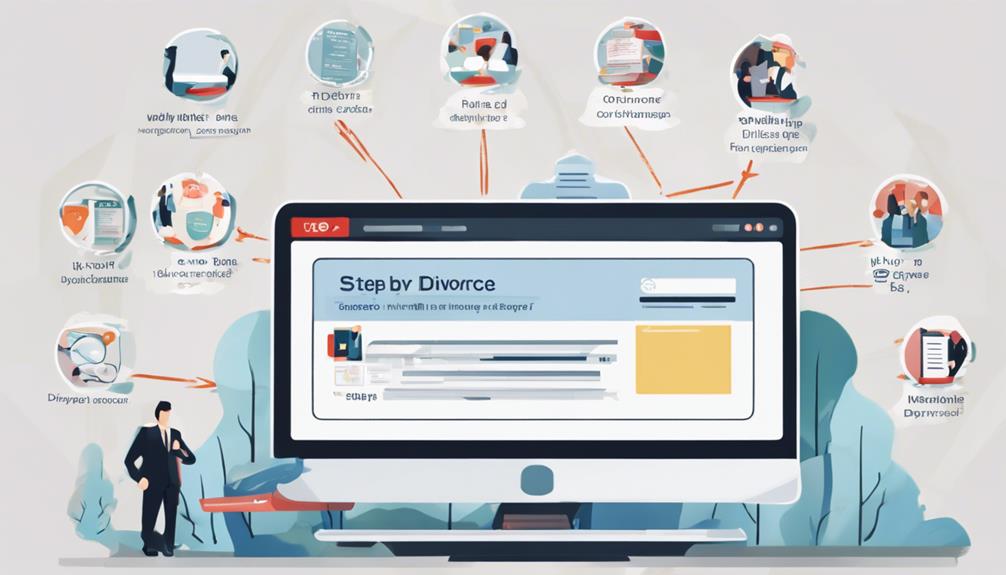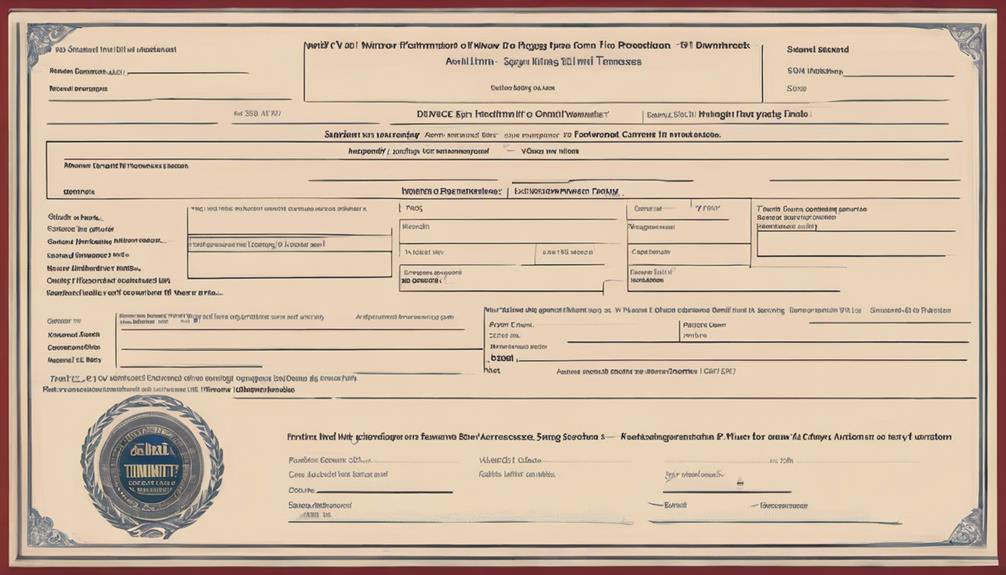Let’s be honest – the thought of going through a divorce without having to go to court seems like a welcome change in a typically stressful situation. But how can someone navigate the complexities of a divorce without resorting to the usual legal fight?
This guide offers a roadmap to achieving a peaceful divorce process, highlighting alternative methods that could save not just time and money, but also potentially spare you from the emotional turmoil often associated with court proceedings.
Curious to know more about these strategies?
Key Takeaways
- Consider divorce mediation for facilitated negotiations and legally binding agreements.
- Opt for collaborative divorce with trained attorneys for amicable conflict resolution.
- Choose divorce arbitration for binding decisions, confidentiality, and cost-effective resolution.
- Utilize online divorce services for guided form completion, 24/7 access, and streamlined process.
Understanding Divorce Mediation Process
In divorce mediation, a neutral mediator assists couples in negotiating and reaching agreements on key issues like child custody, support, and property division. This structured framework allows for a more cost-effective and faster process compared to traditional court proceedings.
The mediator doesn't impose decisions but guides the discussions towards mutually acceptable solutions. One significant advantage of mediation is that the agreements reached can be legally binding, providing a sense of security and certainty to both parties involved.
Initiating Collaborative Divorce Proceedings

Embarking on the journey of collaborative divorce proceedings involves a joint commitment to resolving conflicts amicably outside the courtroom. In a collaborative divorce, both parties enlist specially trained attorneys to negotiate and reach a settlement agreement without going to court. This process emphasizes cooperation and negotiation, aiming to find solutions that meet the needs and interests of both individuals. To facilitate this, additional specialists like financial advisors or therapists may be brought in to assist in the process. Collaborative divorce is a cost-effective and efficient alternative to traditional court-based divorce proceedings, offering a more amicable and less adversarial way to dissolve a marriage. By working together and engaging in open communication, couples can create a mutually acceptable divorce settlement that paves the way for a smoother transition into the next chapter of their lives.
| Key Points | |
|---|---|
| Focus | Cooperation and Negotiation |
| Specialists | Financial Advisors, Therapists |
| Benefits | Cost-effective, Efficient |
Exploring Divorce Arbitration Options
Exploring the various options for divorce arbitration allows couples to consider a private and efficient alternative to traditional court proceedings for resolving marital disputes. In divorce arbitration, a neutral arbitrator is chosen by the parties to make legally binding decisions on divorce-related issues in a private setting. This process offers confidentiality, a faster resolution compared to court proceedings, and flexibility in the rules governing the arbitration.
The decisions made through arbitration become legally enforceable once both parties agree to the arbitrator's decision, providing a structured and binding resolution. While divorce arbitration can be cost-effective and time-efficient, it's crucial for parties to carefully consider the potential costs involved and understand the role of the arbitrator in the process.
Utilizing Online Divorce Services

After considering divorce arbitration options, it's valuable to explore how utilizing online divorce services can provide a convenient and efficient way to prepare necessary documents without the need to go to court. Online divorce services offer a range of benefits, including guided interviews to help users accurately fill out forms, 24/7 access from the comfort of their homes, and the automation of form creation to streamline the divorce process. Here are four key advantages of utilizing online divorce services:
- Guided Interviews: These services provide step-by-step guidance to ensure forms are completed correctly.
- Automated Form Creation: By automating the creation of necessary documents, online platforms save time and reduce errors.
- Convenience: Users can access these services anytime, anywhere, reducing the need for multiple in-person court appearances.
- Efficiency: Online divorce services streamline the process, making it more efficient and less stressful for individuals seeking to finalize their divorce.
Finalizing Divorce Without Court Appearance
To finalize a divorce without a court appearance, submitting a settlement agreement to the court is a common and efficient method. In this process, both parties agree on the terms of the divorce, including property division, alimony, child custody, and support, and outline these agreements in the settlement document.
This method is particularly prevalent in uncontested divorces where there's mutual agreement on all aspects. Once the settlement agreement is submitted, it undergoes review by a judge. If the judge approves the agreed-upon terms, the divorce can be finalized without the need for a court hearing.
Frequently Asked Questions
What Is the First Thing to Do When Separating?
The first thing we must do when separating is prioritize safety and well-being. Collect essential documents like IDs, finances, and legal papers. Seek legal advice to understand rights. Openly communicate with our spouse about decisions and seek emotional support from loved ones or professionals.
Do You Need an Attorney for a Dissolution in Ohio?
No, in Ohio, we don't need an attorney for a dissolution. Both parties must agree on all terms for a no-fault, uncontested process. Filing in the county court and meeting requirements can finalize a dissolution in 30 to 90 days.
Can I Use the Same Process to Get a Divorce Without Going to Court to Remove My Name from a Car Loan After Divorce?
If you’re considering getting your name off a car loan after divorce, the process may differ depending on your specific circumstances. While it may be possible to remove your name without going to court, it’s important to carefully review your options with a legal professional before proceeding.
Conclusion
In conclusion, by understanding the various methods of divorce without going to court, initiating collaborative proceedings, exploring arbitration options, utilizing online services, and finalizing the process without court appearances, we can navigate this challenging time with ease.
Let's approach divorce with compassion, attention to detail, and knowledge, ensuring a smoother transition for all parties involved. Remember, there are alternatives to court that can make this process more manageable and less stressful.











